The course will capitalize on the design backgrounds and interests of the students in the class (graphic+industrial design) and two required projects will be collaboratively developed in small teams. Each of these projects provides an introduction to creative coding programming paradigms for virtual reality platforms and for the web (using Javascript/C#, Autodesk Maya, Unity3D, D3, Processing, three.js etc.). The first project will focus on creative programming for a high resolution, largest in the world, virtual reality environment CAVE2 in the Electronic Visualization Laboratory (EVL). The second project will investigate interactive visualiation for public outreach using the web platform. To contextualize these projects, we will read widely from both seminal texts in multimedia and recent proceedings from computer science and media arts conferences, such as ACM SIGGRAPH and the International Symposium on Electronic Art (ISEA).
This course will introduce a variety of concepts in programming, from the basics of coding and scripting to more complex programming techniques and investigate their applications to create critical, experimental, analytical, and visualizing design. Participants will develop new skills and produce interactive projects using 3D, visualization, virtual reality, multimedia and audiovisual media. This course assumes that students have no prior programming experience but an enthusiasm to study code and scripting to use computation to extend inquiry and exploration in media and society.
Selected projects from this course will be exhibited in the VGA Gallery at the end of the spring of 2019. Founded in 2013, Video Game Art (VGA) Gallery promotes new media art in Chicago community through exhibitions, study, critique, and educational events featuring interactive media art projects, installations, and interactive video games. This course will collaborate with the curator of the VGA gallery Chaz Evans on the development of the virtual reality inetractive exhibition. We will also collaborate with the Immersive Environments SAIC's course and their instructor Brenda Lopez on the preparation for the exhibition.
Week 1
Course overview & logistics: syllabus; schedule.
Content introduction: intro to course.
Team formation: questionnaire.
Introduction to 3D
Maya 2017 Essential Training with George Maestri on Lynda.com (1, 2, 3)
Jeffrey Shaw, The Legible City, 1988-91.
Maurice Benayoun, World Skin: A Photo Safari in the Land of War, 1997;
Presentation at Tools for Propoganda, 2000.
Skip Rizzo, Medical Virtual Reality, 2014;
Virtual Reality Applications to Address the Wounds of War, 2013.
Hunter Hoffman, Virtual Reality Pain Reduction, 2015;
SnowWorld, 2003.
Marcos Novak, Liquid Architectures in Cyberspace, 1991.
Char Davies, Osmose, 1995.
SIGGRAPH 2017 VR Village and VR Theater
VR Village website
Flock
Blortasia
Download Maya Autodesk free version: Maya download
Bring 3-button computer mouse
Complete the Maya “still life” assignment: Maya 3D Scene Assignment.
Download fbx table file.
CAVE2 demonstrations with Arthur Nishimoto
Intro to 3D modeling
Shading, Materials, Textures
UV texture cracker box files
CAVE2 IMMERSES SCIENTISTS AND ENGINEERS IN THEIR RESEARCH – LITERALLY!
CAVE2 Informational Video
Paper City Vimeo
Meats Meier
Pixar Animation- Luxo Jr.
Timothy j. Reynolds
Maya 2017 Essential Training with George Maestri on Lynda.com (4, 5, 6, 10, 11, 12)
UV mapping tutorial -cracker box
textures.com Assignment 2:CAVE2 VR project
1. Meet with your teams to discuss project ideas.
2. As a team, post your three or four best ideas (one idea per team member) on Google Drive. Use a single PDF file for a and b below. For each idea:
a) describe the idea in a paragraph or two;
b) provide a simple sketch of the idea (using your favorite design software or even just a photo of a drawing).
3. Discuss 3 individual ideas to develop team project proposal. Create a PDF presentation which includes the following slides:
-project title / team members
-3 proposed projects with descriptions and sketches
-final proposed concept description (300 words)
-sketches/ inspirational illustrations/designs that inspired your concept
-other published VR projects relevant to your concept
Intro to materials and textures
Polygonal modeling
Shading, Materials, Textures
UV texture cracker box files
Paul Debevec, Light Stage X Smithsonian 3-D portraits of President Obama
Skin Stretch: Simulating Dynamic Skin Microgeometry SIGGRAPH 2015
The Digital Emily Project
Maya 2017 Essential Training with George Maestri on Lynda.com (4, 5, 6, 10, 11, 12)
UV mapping tutorial -cracker box
textures.com Assignment 2: UV texturing
Revise your VR project concept
Team formation
Intro to Unity (unity overview, editor, primitives, materials, textures, terrain, prefabs)
Unity 3D Essential Training by Adam Crespi/ Ch. 1, 2, 4
Unity Manual
Unity tutorials
SIGGRAPH 2018 Virtual, Augmented and Mixed reality
Finalize your VR project concept
Intro to Scripting (variables, functions, triggers, collision detection, sounds, colors)
Readings + Videos:
Unity 5: 3D Essential Training by Adam Crespi/ Ch. 3, 7
Unity Scripting / Ch. 1-5
Assignment :
Project 1
CAVE2 VR projects / Refined concepts with storyboards
Project 1 Team Concept Presentations
Unity Interaction, Materails, Colors
Readings + Videos:
Project 1 - Unity Environment/Assets
Unity components, Prefabs, Instantiate
Interaction, Prefabs, Components
Unity Scripting / Ch. 12-13, 16-17, 19-21, 24
Unity Scripting API KeyCode
Project 1 - Interaction
CAVE2 testing with Arthur Nishimoto
Testing in CAVE2
CAVE2 Unity Tutorial
Download Unity template for CAVE2 Environment
CAVE2 Unity tutorial documentation
CAVE2: A Hybrid Reality Environment for Immersive Simulation and Information Analysis
Assignment:
Testing 1 revisions
Week 9
Teleport, Collisions, Parenting
Testing 2 / CAVE Project / VR environment, User interaction
CAVE2: A Hybrid Reality Environment for Immersive Simulation and Information Analysis
Assignment:
Testing 2 revisions
Testing 3 / CAVE Project / iteraction, navigation Readings + Videos:
CAVE2: A Hybrid Reality Environment for Immersive Simulation and Information Analysis
Assignment:
Testing 3 revisions
Spring Break
CAVE Project Review
Presentations in the CAVE2
Team 1 - Kymia, Patricia, Ivan
Chaos Room [report] [video]
Team 2 - Jade, Jasmine, Isabel
Human Footprint [report] [image]
Team 3 - Tobi, Jonathan, Heather
Paintroom [report] [video]
Team 4 - Farida, Scott, Dana
Fighting Fire [report] [video]
Team 5 - Ali, Osiel, Yawen
Unsolved Murder [report] [video]
Team 6 - Ahmad, Fred, Kamil
Coral in Color [report] [video]
Team 7 - Nour, Brandon, Chris
Pollutants [report] [video]
VR project documentation review
Assignment:
Documentation revisions
Week 14
Field Trip "Chicago New Media 1973-1992" Gallery 400
Although Chicago is not often thought of as an epicenter for new media art, technology, or industry, the city was home to some of the earliest and most important experiments in new media in the late 20th century.
Assignment:
Documentation revisions
Week 15
Dan Sandin Presentation ""What is VR and what is it good for”
Final Presentations
Kyra Jones, Danyi Wang, Qiuguifel Yang
— External hard drive to save your back up files. Students are required to store and backup their files appropriately and an additional data storage is strongly advised for back-up.
— Maya, Unity (Download and install).
On-time class attendance is mandatory. It is not possible to make up or compensate for missed class sessions. More than two unexcused absences will result in a reduction of the final grade by one letter grade; with every additional unexcused absence, the final grade will drop by an additional grade. Some of the discussions and exercises are done and graded in-class so you must attend class to receive these points.
For best in-class participation, you should complete required readings and tasks before class (will be specified in the study guide in each module). Be prepared for a lot of hard work: be prepared to code, often, and much outside of the class. This course will be difficult but also very much in-depth and useful to prepare your creative portfolio.
There is a lot of self-study required as our lecture time limited as well as our lab time, and the goal is to maximize that time. Each session will have required pre-reading and post-reading. The instructor reserves the right to add online tutorials, lectures and video sessions to class lectures and homework.
You must submit all assignments via UIC Box unless otherwise instructed on the deadline specified for each assignment. Assignments must be professionally prepared with recommended computer applications. Unless otherwise stated, assignments must be submitted electronically to the UIC Box.
Projects more than 5 days late will not be accepted. Be sure to submit the work well ahead of due time. Excuses like website or computer error will not be accepted after the due date.
‘Incompletes’ will only be granted according to University policy.
A = Consistent growth as well as excellent work that consistently goes above and beyond what is required.
B = Above average growth as well as above average work.
C = Average growth as well as average work.
D = Dissatisfactory growth and incomplete work.
E = Dissatisfactory growth, incomplete work, and poor attendance.
The numeric breakdown for the final grade follows:
40% Project 1 / Presentation and documentation (team)
10% Project 2 / Presentation and documentation (team)
30% Shorter assignments (individual)
20% Attendance and participation (individual)
Any individuals with learning disabilities or special needs must make the instructor aware of them prior to the due date of the first major assignment. Those who require accommodations for access and participation in this course must be registered with the Disability Resource Center. Please contact DRC at 312/413-2183 (voice) or 312/413-0123 (TTY). http://www.uic.edu/ depts /oaa/disability_resources /contact.html
If you wish to observe your religious holiday, which is in the conflict with mandatory academic attendance, you should notify the instructor by the tenth day of the semester of the date on which you are requesting an absence.
You are responsible for understanding what constitutes academic dishonesty. Academic dishonesty is an extremely serious offense. All cases of academic dishonesty will be dealt with in accordance with the policies of the University as published in the Undergraduate Catalogue and the University of Illinois at Chicago policy on Academic Honesty at: http://www.uic.edu.ucat/cat1315archive/index.shtml
The VR Book - Human-Centered Design for Virtual Reality by Jason Jerald (2015)
Cyberspace: first steps by Benedickt Michael 1991.
ACM Transactions on Graphics (Proceedings of SIGGRAPH), 2019 and earlier. (Available from ACM through UIC digital library)
Leonardo, 2019 and earlier (Available from MIT Press through UIC digital library)
Proceedings of the International Symposium on Electronic Art, 2019 and earlier (Available online)
Selected readings from The New Media Reader, edited by Noah Wardrip-Fruin and Nick Montfort, MIT Press 2003.
Peripheral Vision: Bell Labs, the S-C 4020, and the Origins of Computer Art, Zabet Patterson, MIT press, 2015.
Gödel, Escher, Bach: an Eternal Golden Braid, Douglas Hofstadter, Basic Books, 1991.
Unity Game Development Essentials Kindle Edition by Will Goldstone.
Unity 3D Game Development by Example Beginner’s Guide by Ryan Henson Creighton
Unity website: http://unity3d.com
Unity Asset Store: https://www.assetstore.unity3d.com
Unity Scripting Reference: http://docs.unity3d.com/ScriptReference
Unity Tutorials: http://unity3d.com/learn/tutorials
Autodesk Maya: https://www.autodesk.com/education/free-software/maya
MaxMSP: https://cycling74.com
D3.js: http://d3js.org
Three.js: http://threejs.org
Lynda.com Training Tutorials@UIC: http://accc.uic.edu/service/training
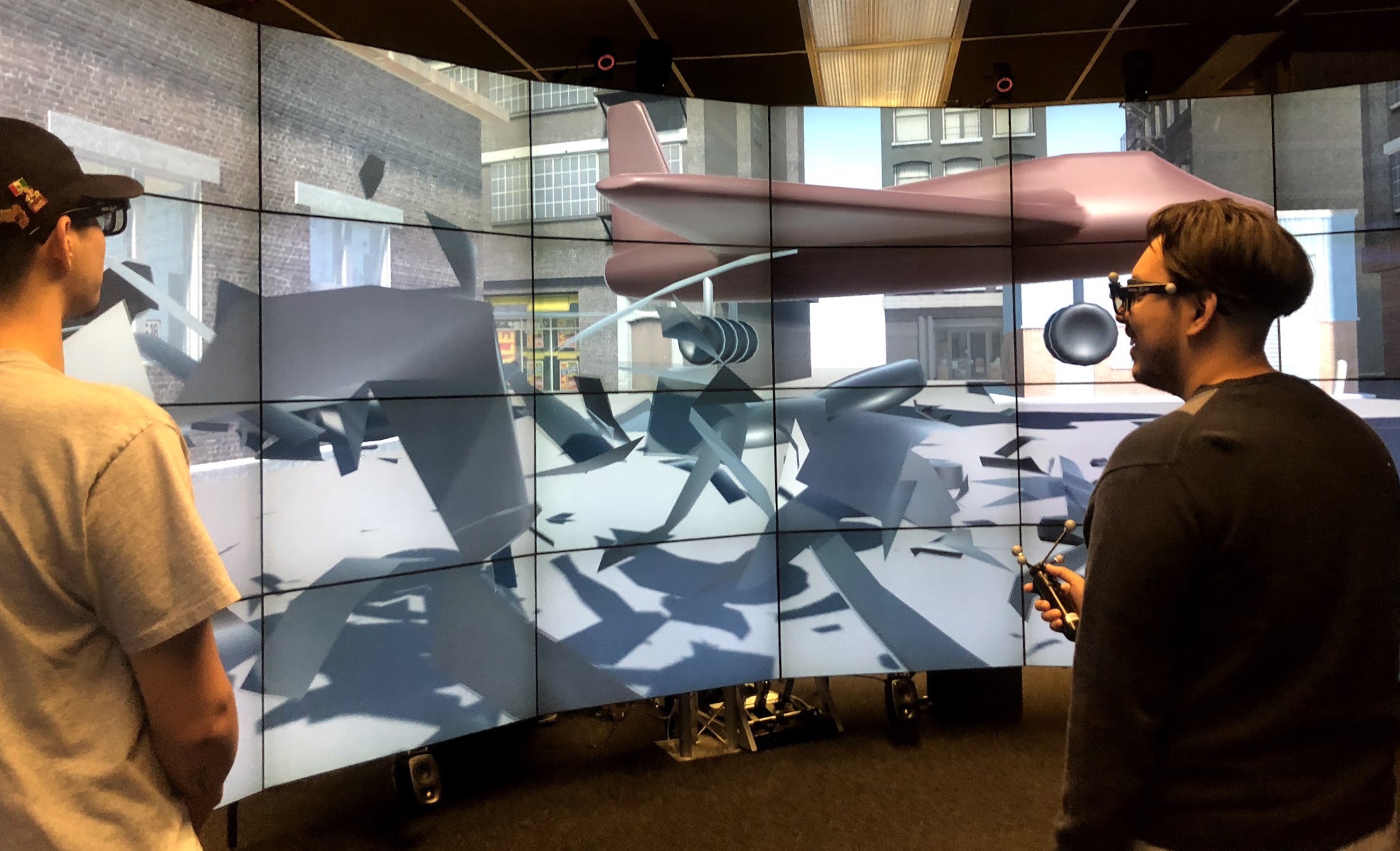
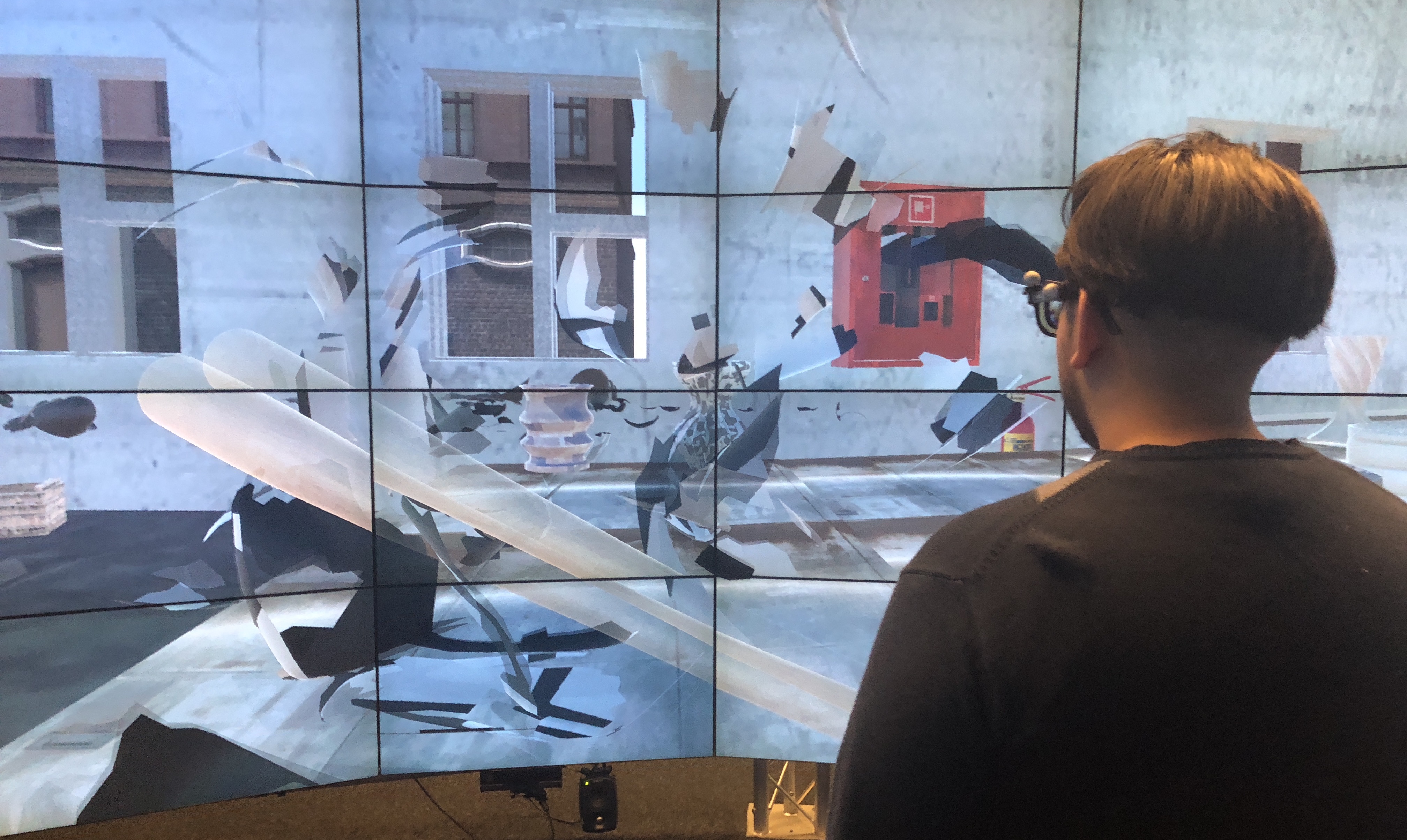
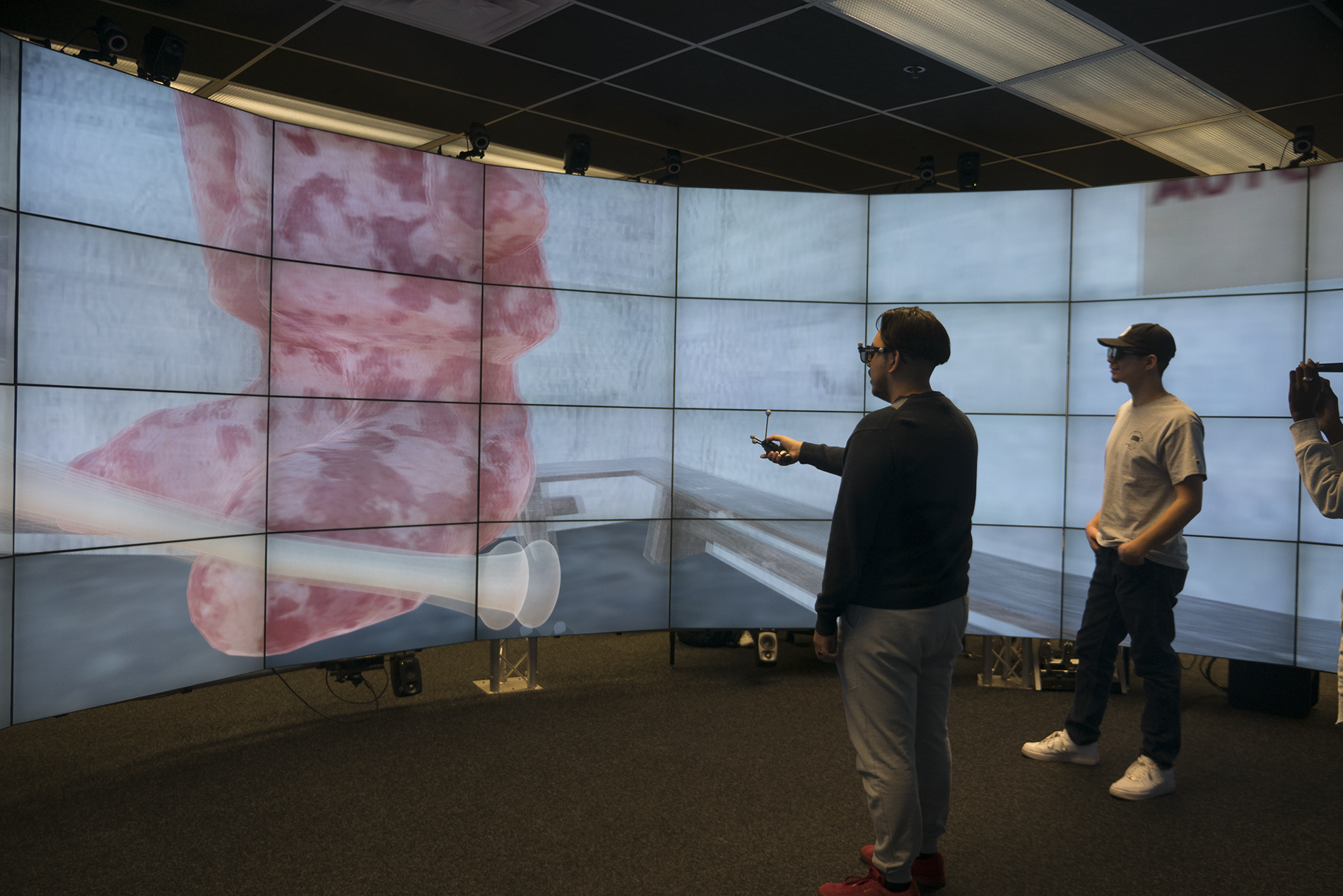
Chaos Room by Kymia, Patricia and Ivan is immersie Destruction Therapy designed to help people deal with many kinds of distress such as anger, stress and anxiety.
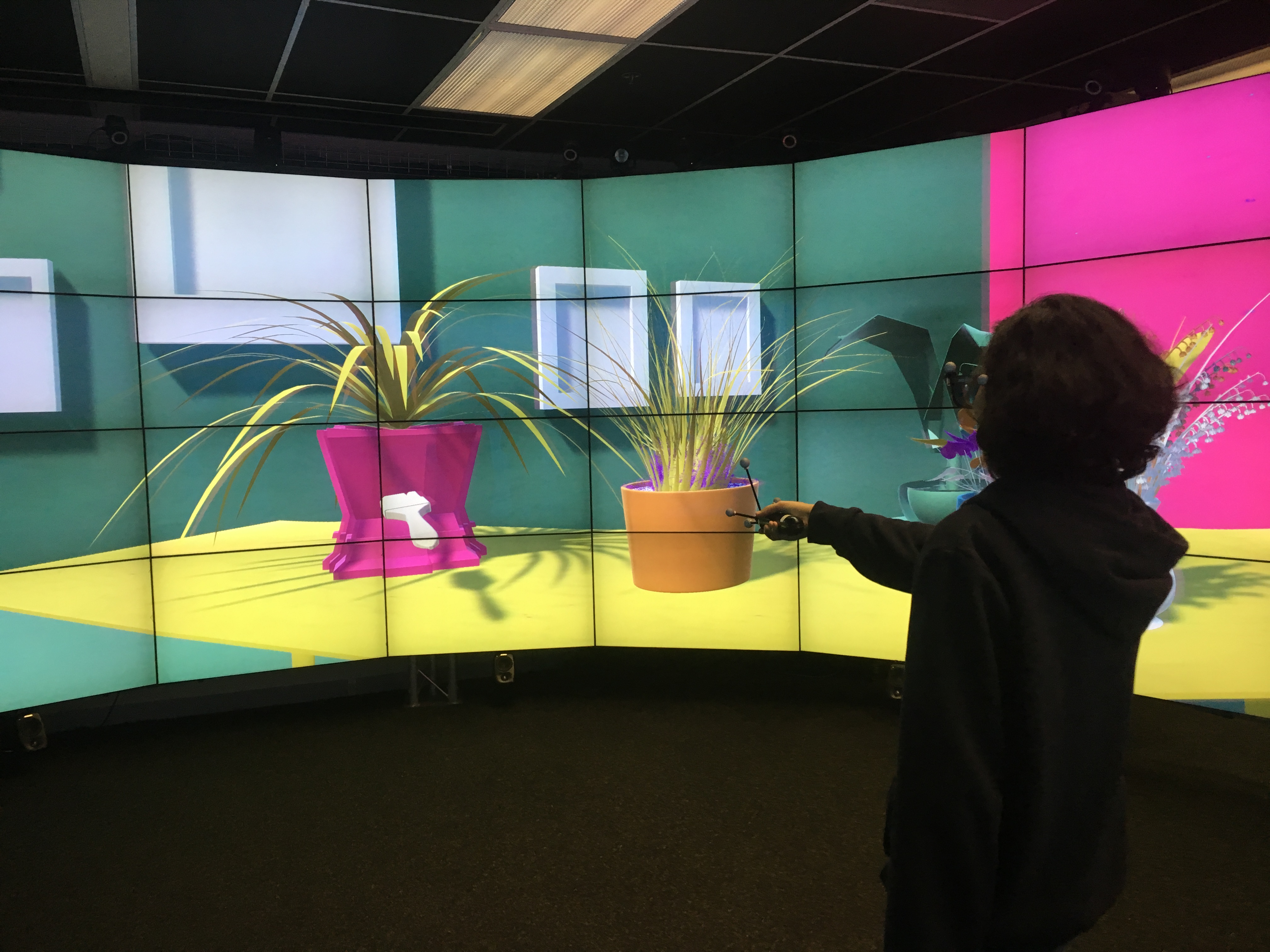
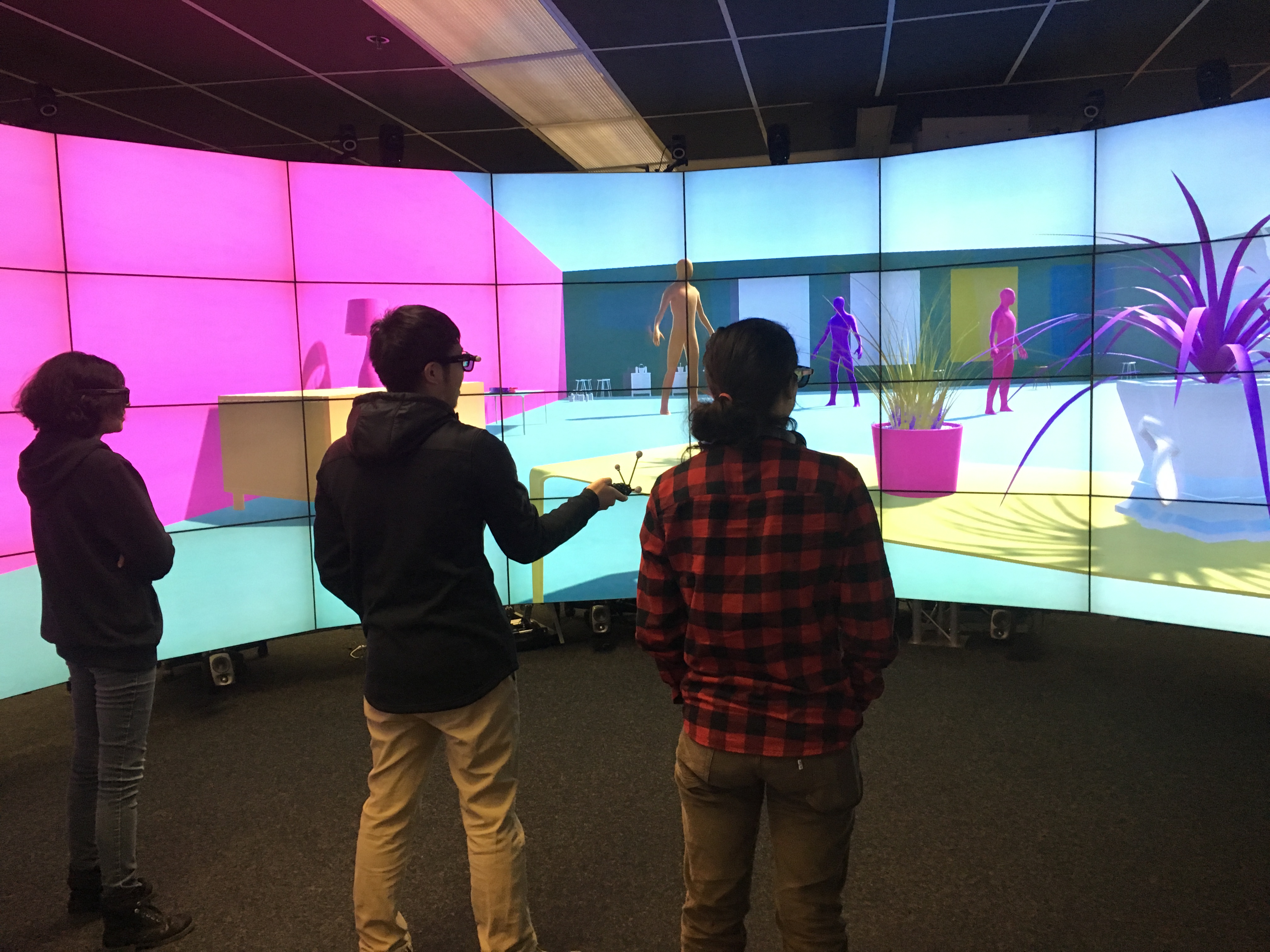
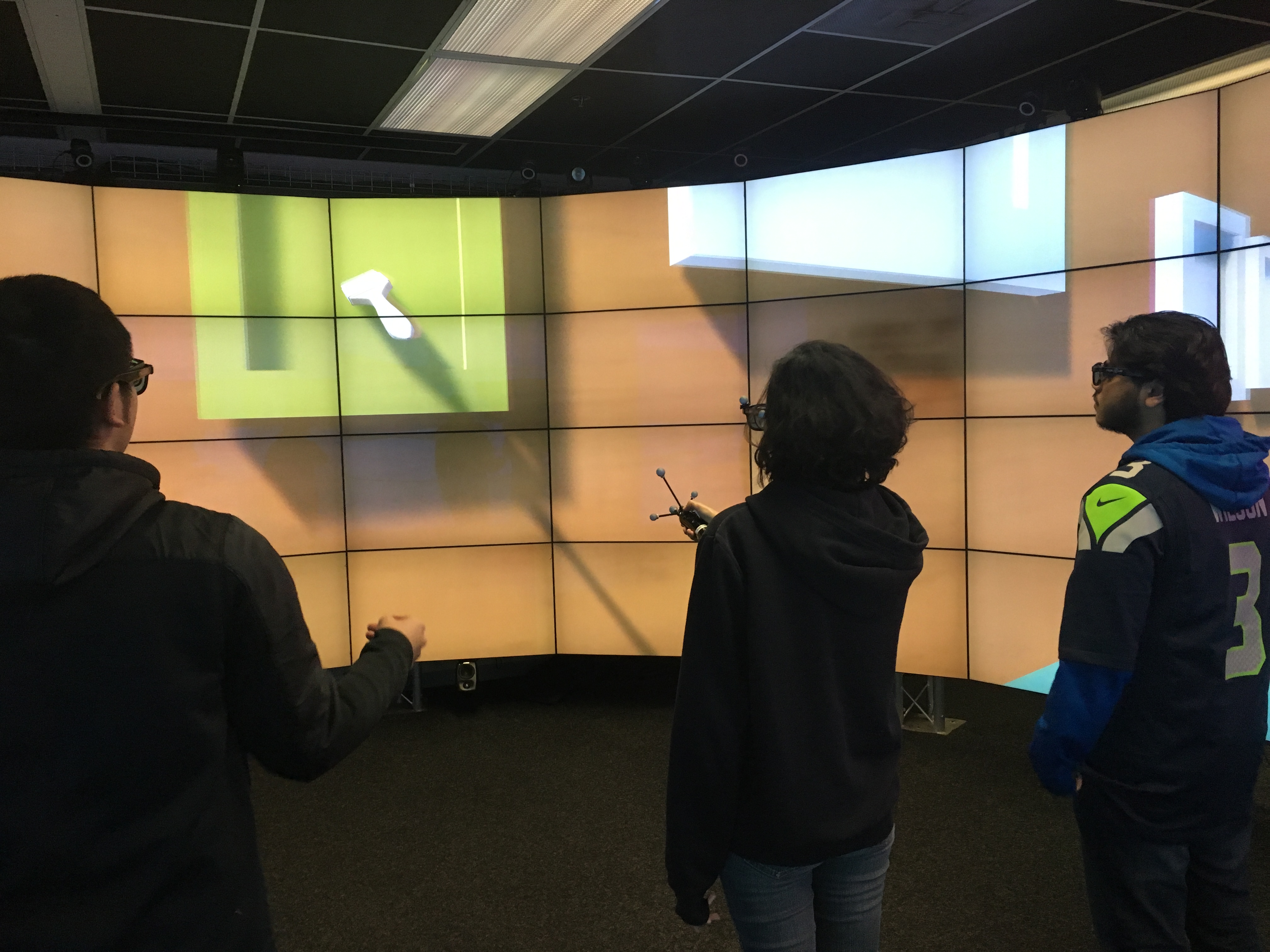
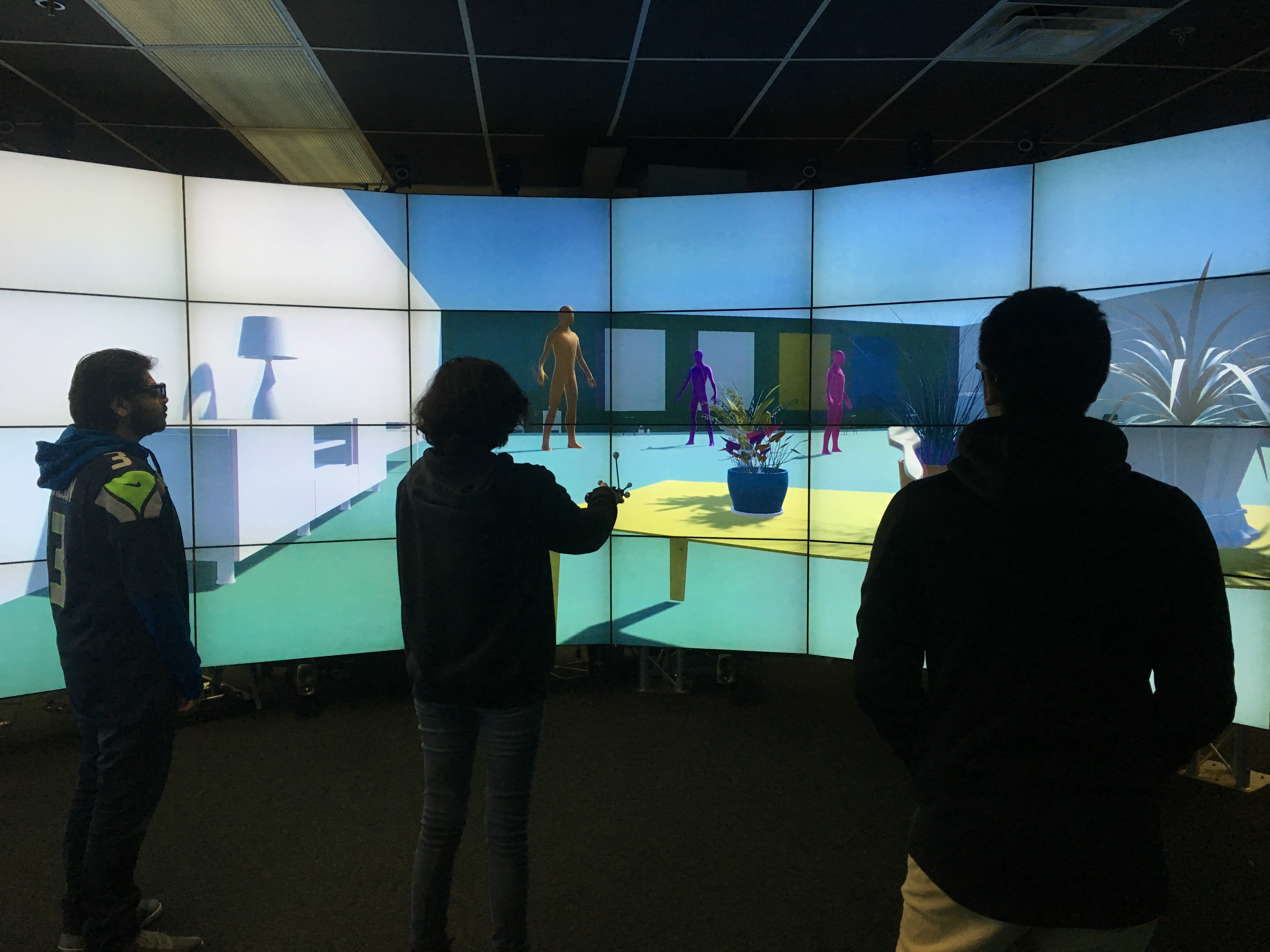
Tobi, Heather and Jonathan created virtual Paintroom inspired by art therapy to help adult users release and manage stress through painting.
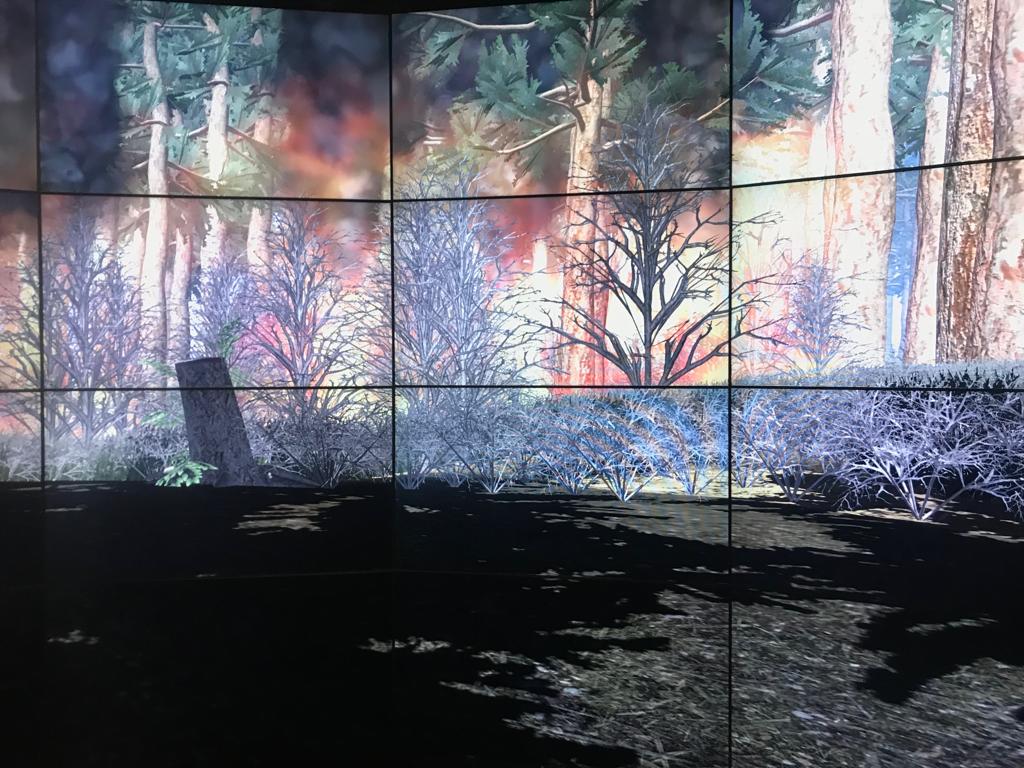



Forest Fire by Farida, Dana and Scott immerse participants in virtual forest fires to aid humans in understanding better ways to handle wildfires.

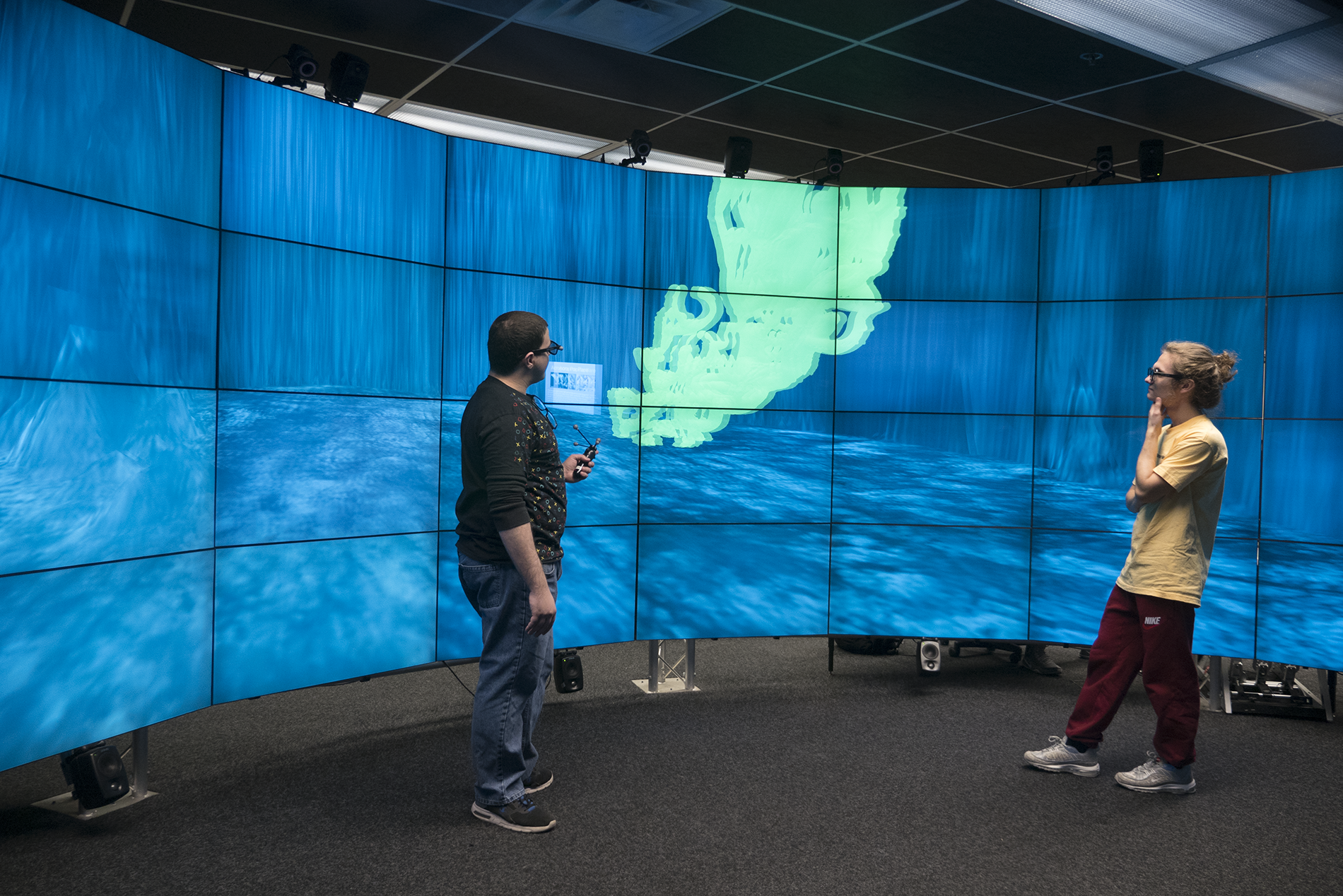
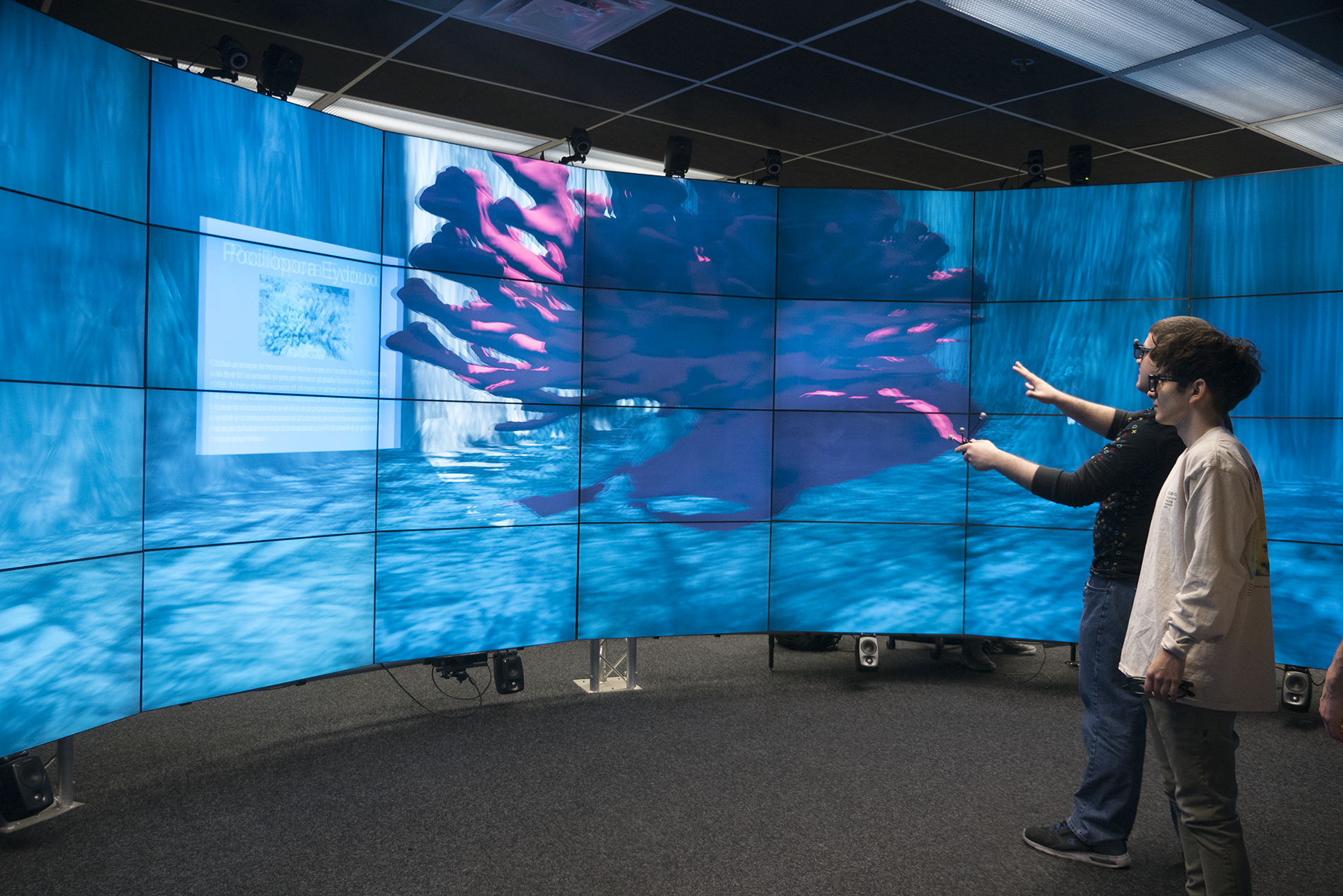
Ahmad, Kamil and Fred creatied VR environment visualizing intercative coral reef ecosystem affected by pollution and climate change.

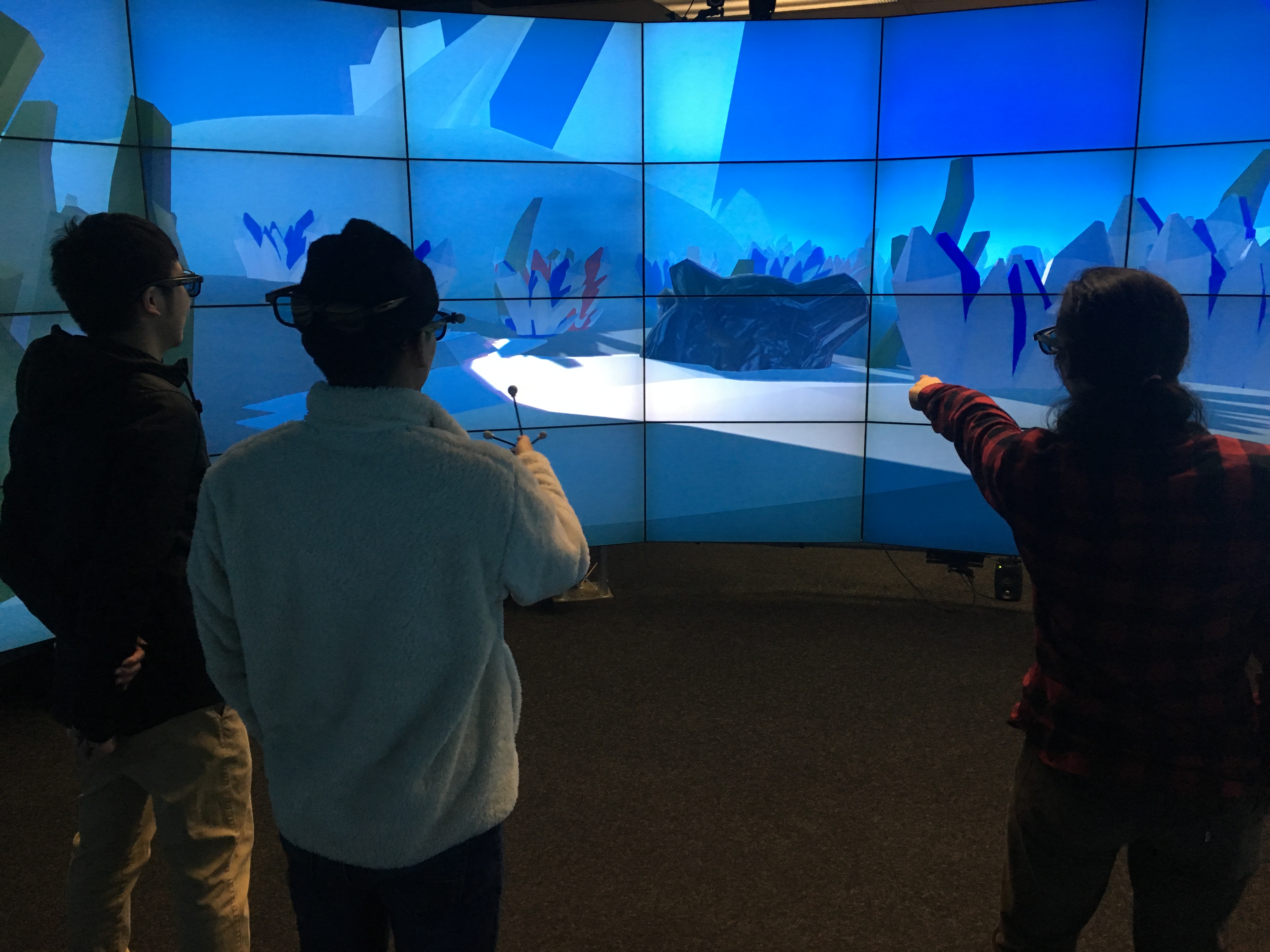
Pollutants project designed by Chris, Brandon and Nour is a virtual reality exploration using CAVE 2 technology emphasizing and educating the user on the impact of ocean pollution and the harmful effects caused by human actions.
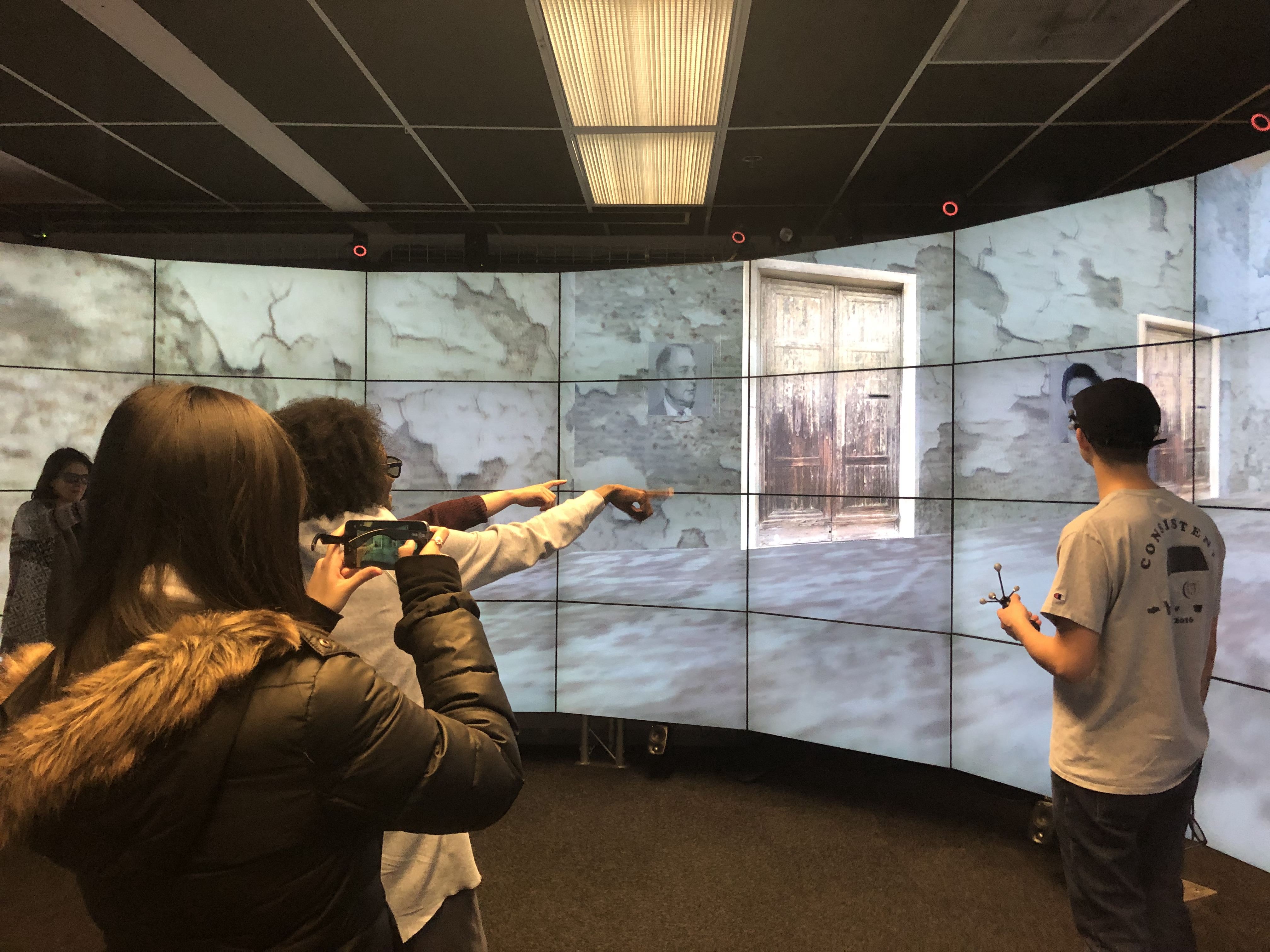
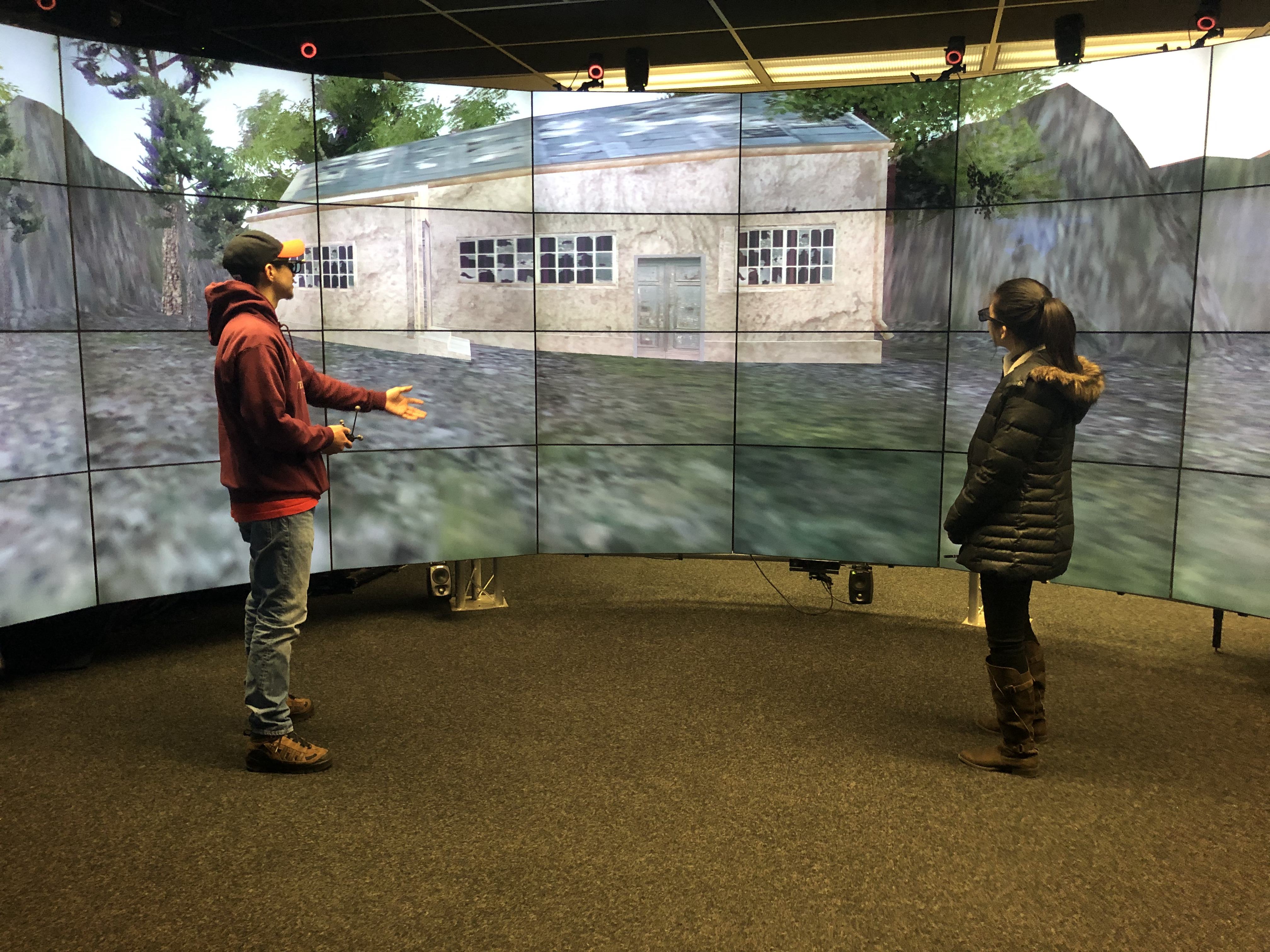
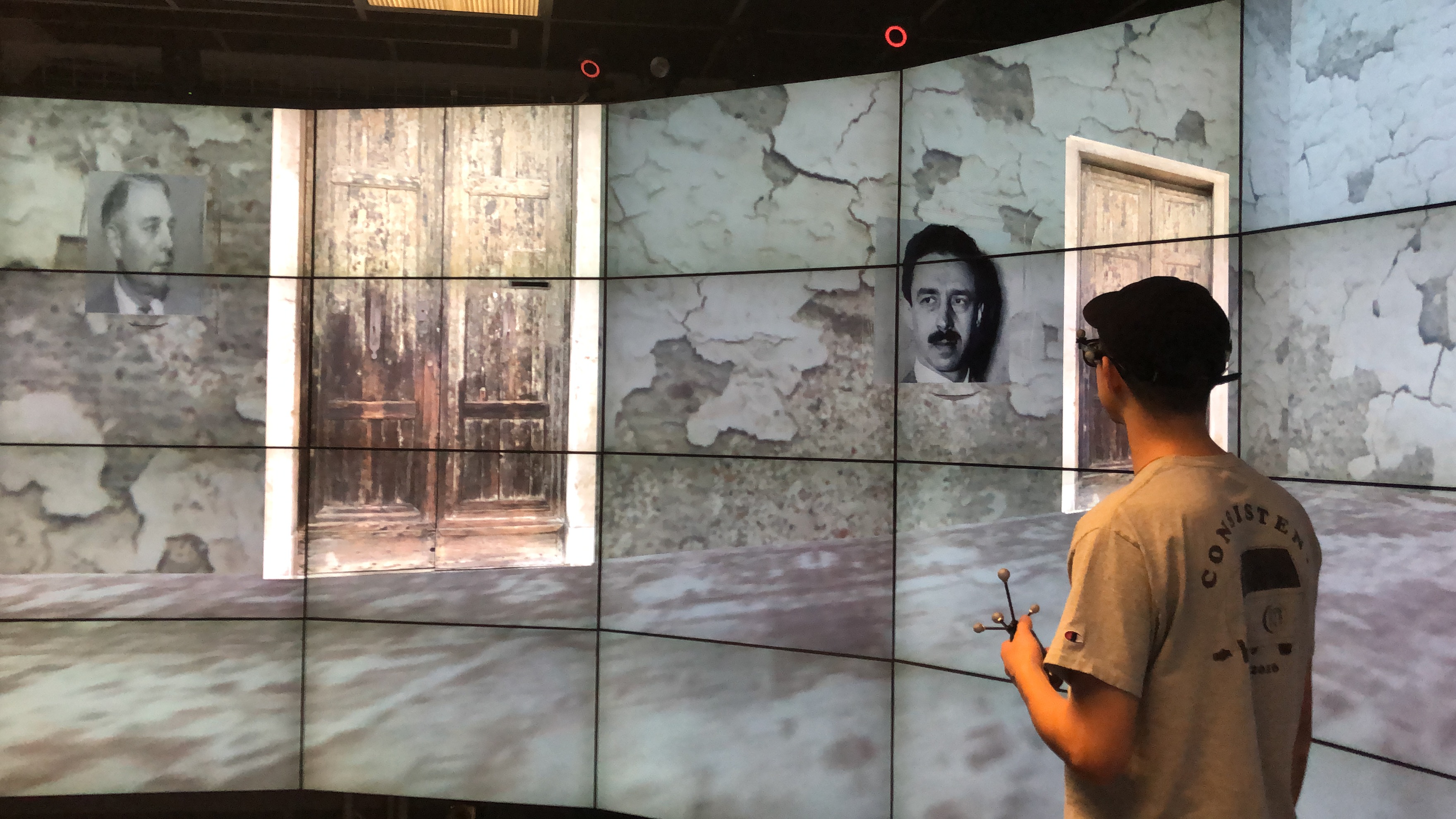
Unsolved Murder, by Yawen, Ali, and Osiel, is a VR environment that educates the player about the unsolved murder case of the Black Dahlia, also as known as the murder of Elizabeth Short.
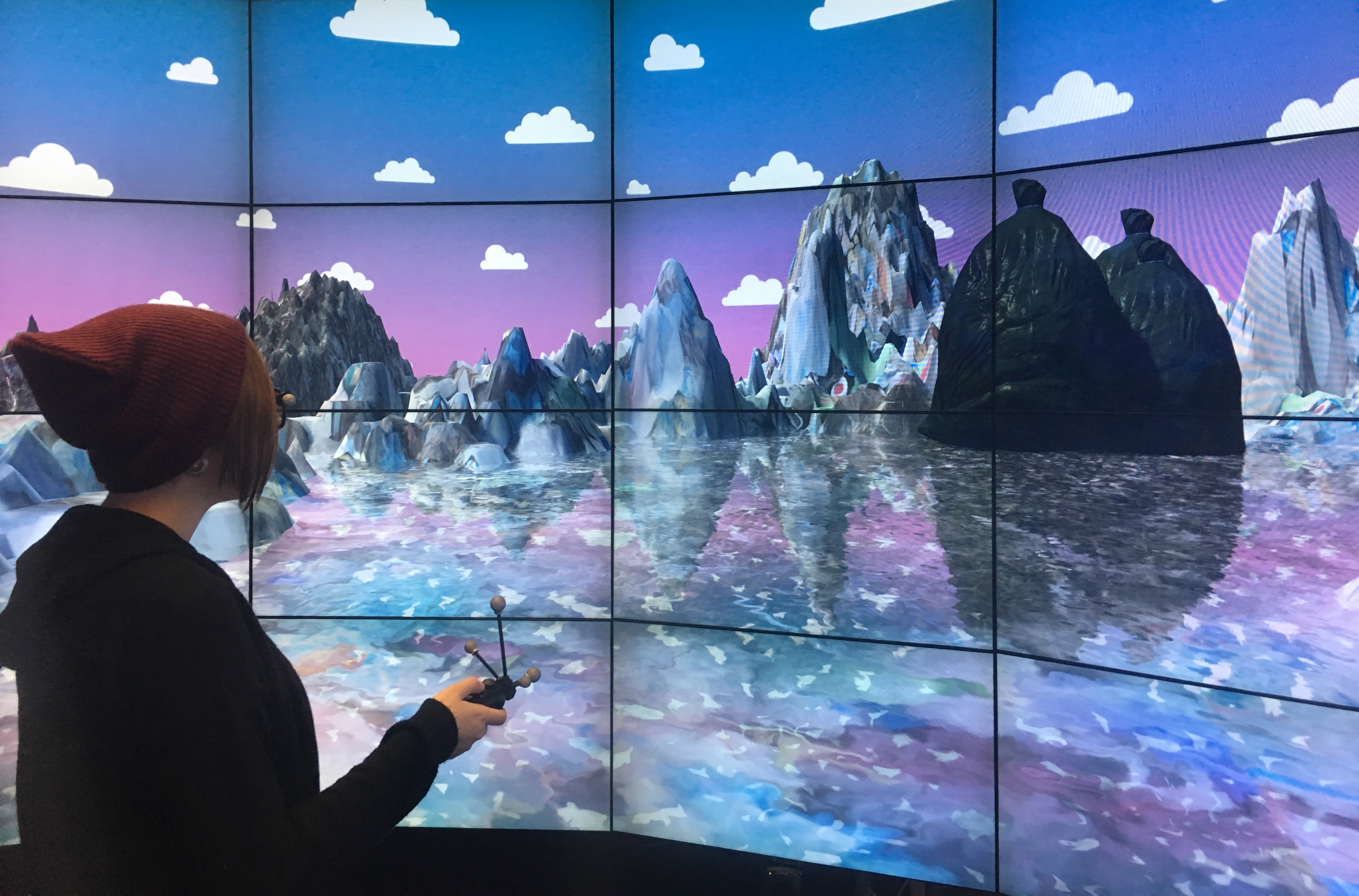
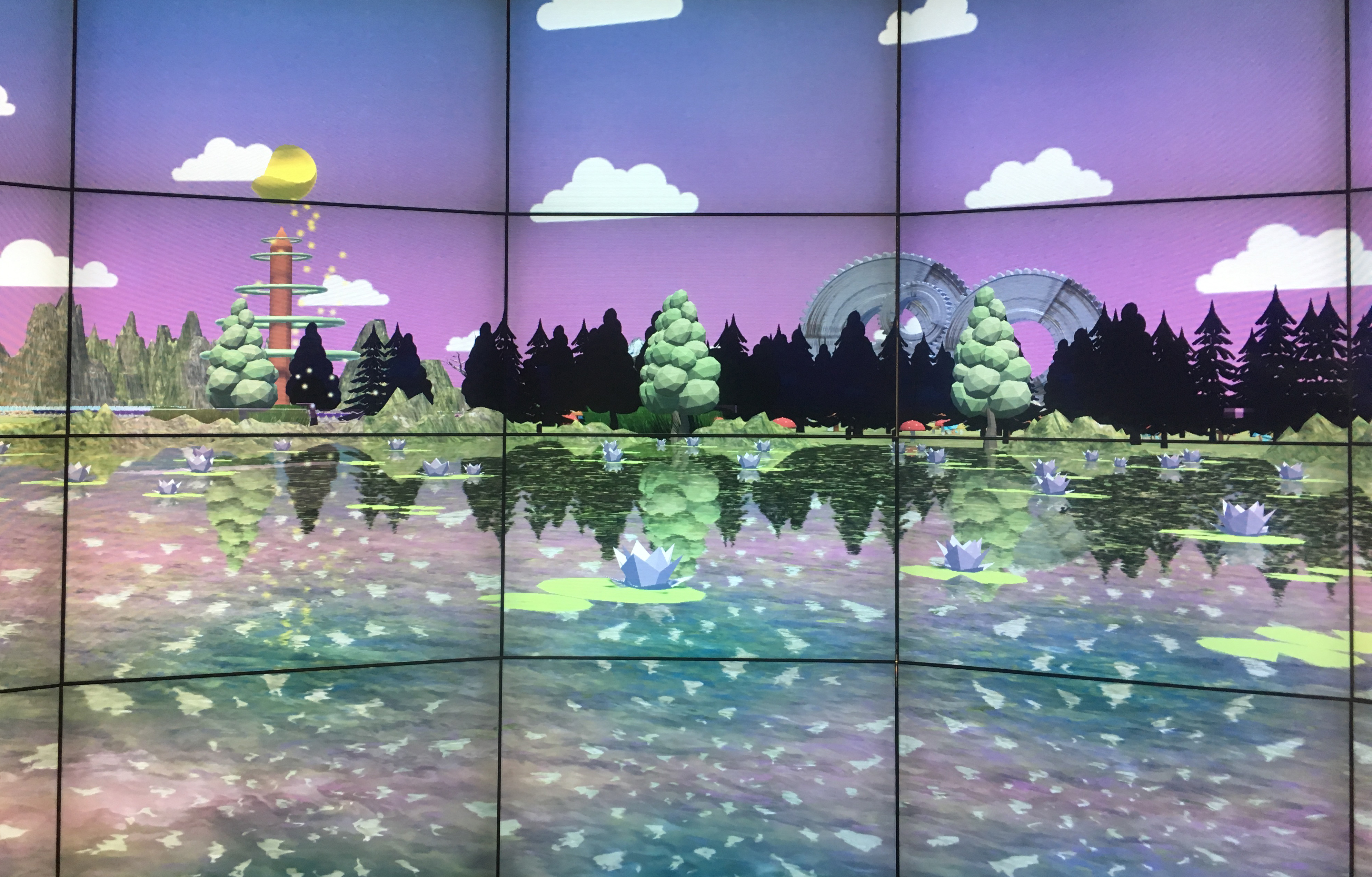
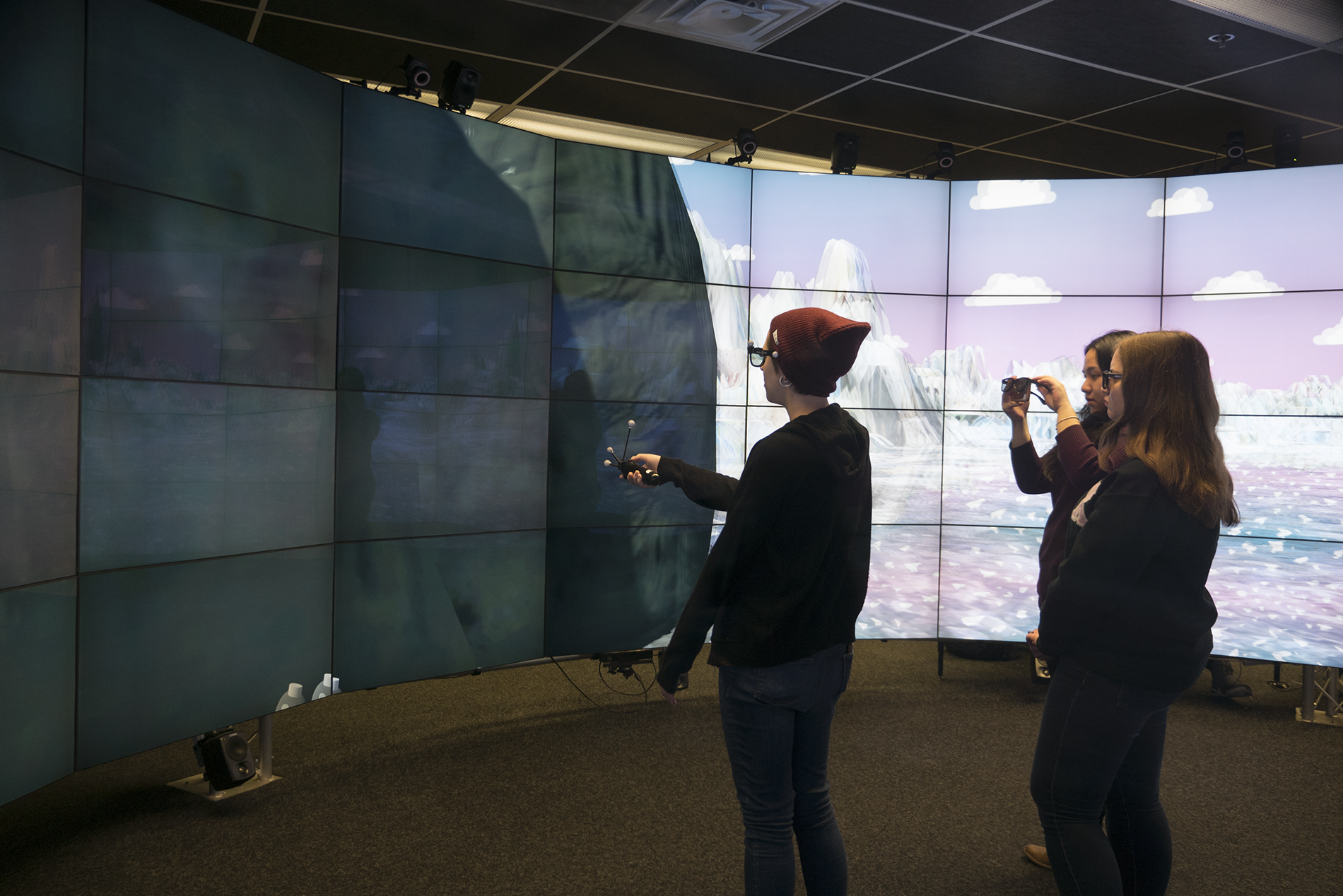
Jade, Jasmine and Isabel created virtual environment to raise awareness about the consequences of human’s carbon footprint.